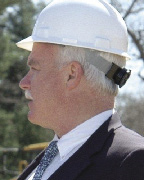As we roll into 2011, the dynamics of the real estate and construction markets are beginning to show some stability as the underpinning of each are becoming more positive. The U.S. Department of Labor estimated that over 100,000 construction jobs have been lost in 2010, a figure that is significantly lower than in 2009. The avalanche of foreclosures and short sales seemingly is abating as noted in the uptick in real estate transactions in December 2010. It has been reported that the holiday sales were more robust than the prior year. More and more people are sticking their heads out of their foxholes and beginning to spend again as their confidence is rising on what lies ahead.
These psychological changes should begin to diminish the unemployment rate as well - as this is what ultimately drives the commercial market. As people regain their confidence and economic footing, the commercial real estate markets will feel pressure to respond and the banking industry will look to make money again on real estate loans. There are many backlogged projects waiting for impetus.
This trickledown effect can take some time to congeal and for its impact to be felt in the construction industry. In my crystal ball, late 2011 appears to be where projects will begin to emanate. The Obama administration will also feel significant pressure to stimulate the economy but this time the injection will come from fiscal policy rather monetary cash grants policy and there will be a longer lag time.
In the meantime, our firm has weathered this storm by staying fairly diverse. For J. K. Scanlan, markets that are still active are in the alternative energies; healthcare; senior/assisted living and affordable housing; and the government and municipal markets. While larger scale construction projects have slowed down, hospitals continue to improve their facilities. The healthcare industry is still sorting out the impact of Obama care but there does seem to be a fair amount of activity with community health centers. In addition, the green movement continues its momentum in construction and healthcare is no exception. Along with the obvious environmental issues, hospitals and healthcare centers implement these green practices within new and renovation projects, creating more pleasing surroundings for their patients.
Wind energy projects have become a focus for our firm, since our venture into this territory our firm has been awarded over 13 megawatts of wind turbine construction projects. Wind power is one of the fastest-growing sources of energy around the world. It is popular because it is abundant and provides many communities with a clean, local source of electricity as opposed to imported fossil fuels. The Department of Energy has estimated that wind power could account for 20% of the nation's electricity supply by 2030. It has been reported that despite the crippling recession and tight credit markets, the American wind power industry has grown at a remarkable pace in 2009, adding 39% more capacity. In fact, the United States is close to the point where 2% of its electricity will come from wind turbines. The American Wind Energy Association reported that the growth of wind power was assisted by the federal stimulus package which extended a tax credit and provided other investment incentives for the wind industry. This trend slowed in 2010 as the recession idled many manufacturers and new orders weakened. These trends seem to be sustained and I am optimistic that our revenues will be stable until the commercial and institutional markets regain their legs.
So my opinion is, there is cause for optimism. While the economy and construction industry are still slow to recover, new developments will create jobs and help sustain the local economies, in turn the national economy will also regain its momentum. For many Americans, this recovery is taking longer than we would like, but I am cautiously optimistic. The firms that prosper will have this same or similar market diversity and be able to strategize how to get over the mountain until later this year.
Good luck!
John Scanlan is president of JK Scanlan Company, Inc., East Falmouth, Mass.
Tags:
Firms that prosper will have market diversity and be able to strategize how to get over the mountain
January 27, 2011 - Spotlights









